Canon EOS R5 Review
Canon EOS R5 Introduction
The Canon EOS R5 is the ultimate Mirrorless Digital Camera of the RF-platform which is based on a high-speed electronic lens-mount with Full-Frame coverage. This is an upper-range mirrorless system that supports larger sensors than the Canon M platform which is limited to APS-C sensors having a 1.6X crop-factor. The RF-system launched with the Canon EOS R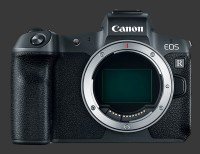
Canon EOS R, followed by the entry-level RP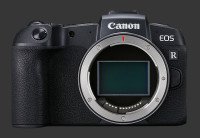
Canon EOS RP and then the R6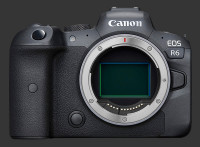
Canon EOS R6 and R5 were launched simultaneously. Although these two latest cameras look externally similar and feature common new technology, the flagship R5 is in a league of its own, surpassing on many levels all other cameras to date.
Canon created an entirely new sensor for the EOS R5 that is the culmination of years of technological progress. This 45 megapixels Dual-Pixel CMOS sensor has 90 million photosites that record light in pairs for each pixel with slightly different phases. These dual pixels allow the camera to measure focus at every pixel and provide an outstanding 5940-Point Phase-Detect AF system. The sensitivity of these photosites is so high that it allows the camera to focus down to -6 EV, something that can only be exceeded by the R6 which sports larger pixels of the same technology.
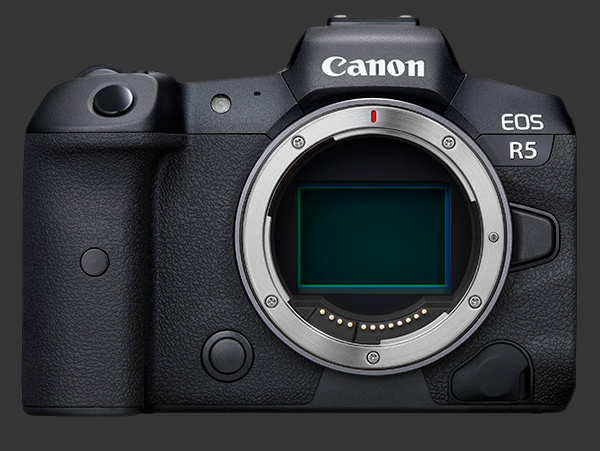
The Full-Frame sensor in this camera has the resolution and speed required to record 8K video. With a linear resolution of 8192x4320, video from the R5 captures 4X more details than Cinema 4K! It record such high-resolution video at up to 30 FPS in 12 RAW or 10-bit MPEG-4. The Canon EOS R5 can also record Cinema 4K video at a ground-breaking 120 FPS. The R5 is the first photo camera capable of 8K video capture.
Photographers all rejoiced at the development of an in-camera image-stabilization system for the first time on a Canon interchangeable lens camera. While catching up with other manufacturers would have made everyone happy, Canon delivered the most capable sensor-shift stabilization mechanism in the world. This state-of-the-art 5-axis system can compensate for up to 8-stops of camera-shake compared to hand-holding! Canon uses their high-speed RF-mount to gather measurements coming from gyroscopes inside the camera and lens to maximize performance. With standard unstabilized lenses, the efficiency of the system varies between 6 and 8-stops which is the difference between stellar and out-of-the-world performance!
As a flagship camera, the Canon R5 is built for professionals. Its features a 5.8 MP 0.5" EVF with large 0.76X magnification, 100% coverage and an Eye-Start Sensor plus rare Triple Control-Dials, an 8-way focusing joystick and a top status LCD in a weatherproof body that sports CF Express and SDXC UHS-II memory card slots. 8K and 4K at 120 FPS video require faster CF Express card.
This in-depth review of the Canon EOS R5 takes a detailed look at all its capabilities, covers its usability and analyzes the image-quality and performance of this flagship Full-Frame Mirrorless Digital Camera.
Canon EOS R5 Features
Sensor
- 45 Megapixels Full-Frame CMOS sensor
- Dual-Pixel AF II phase-data on every pixel
- Fixed Anti-Alias Filter
- Built-In Image Stabilization:
- 5-Axis Sensor-Shift
- 8-Stops Efficiency
- Dual body and lens system
- Ultra-Sonic Sensor-Cleaning
- Canon RF-mount
Exposure
- ISO Sensitivity:
- Standard ISO 100-51200 range
- Expanded ISO 50-102400 range
- Auto ISO, Customizable
- 1/3 or 1 EV steps
- Hybrid Shutter:
- 1/8000 - 30s, 1/3 or 1/2 EV steps
- Bulb, 4 hours and 40 mins max
- Bulb Timer, 99 hours max
- 1/200s Mechanical Sync
- 1/250s Electronic Sync
- PASM Exposure modes
- Program-Shift in P mode
- Flexible Exposure mode
- EC: ±3, 1/3 or ½ EV increments
- Multi-Segment, Center-Weighed, Spot and Partial metering modes
- AEB: 2, 3, 5 or 7 Frames, ±3, 1/3 or ½ EV steps
- Flash-Compensation, ±3, 1/3 or 1/2 EV steps
Image Parameters
- White-Balance:
- AutomaticAmbience or White Priority, 6 presetsDaylight, Shade, Cloudy, Tungsten, Fluorescent and Flash., Kelvin and Custom WB
- Fine-Tuning: 19-steps, 2-Axis
- Bracketing: 3 Frames, 3 Increments
- Picture Styles:
- 6 Color Modes plus B&W
- Sharpness: 8 levels
- Fineness and Threshold: 5 levels
- Contrast:, Saturation and Color-Tone: 9 levels
- Clarity: 9 levels
- Optional Highlight Tone Priority, 2 levels
- Optional High ISO Noise-Reduction, 3 levels
- Optional Multi-Frame Noise-Reduction, JPEG only
- Optional Long Exposure Noise-Reduction
- JPEG, 10-bit HEIF, Lossless RAW output
- Compressed and Dual-Pixel RAW formats
- RAW + JPEG and RAW + HEIF modes
- sRGB or Adobe RGB color space
Focus
- Focus Drive: Single-Shot (AF-S), Continuous (AF-C), Servo (AF-A) or Manual Focus
- Focus Selection: Single-Point, Multi-Point, Areas, Zones, Face-Detect
- Subject Tracking: Neutral, People or Animals
- Dual Pixel AF II System:
- 5940-Point Phase-Detect AF system
- 1053-Zone Phase-Detect AF system
- 100% Frame-Coverage
- Sensitive to -6 EV
- Focus Bracketing:
- Frames: 2-999 Frames
- 10 step sizes
- Optional Exposure-Smoothing
Drive
- 20 FPS Electronic-Shutter Drive:
- Max 170 JPEG images
- Max 83 13-bit RAW files
- 12 FPS Mechanical-Shutter Drive:
- Max 350 JPEG images
- Max 280 10-bit HEIF images
- Max 260 14-bit Compressed RAW files
- Max 180 14-bit RAW files
- Builtin HDR: 3 Frames, ±3 EV
- Interval Timer
- Unlimited frames or preset 1-99
- Interval 1s to 100h minus 1s
- Self-timer: 2s or 10s
- Multiple-Exposure, 2-9 Frames
- Optional EFCS
Video
- 8K RAW:
- 8192x5464 @ 30 FPS
- 3:2 Aspect-Ratio
- 12-bit RAW, Internally & Externally
- Cinema 8K:
- 8192x4320 @ 30 FPS
- 17:9 Aspect-Ratio
- 10-bit MPEG-4 Max
- Standard 8K:
- 7680x4320 @ 30 FPS
- 16:9 Aspect-Ratio
- 10-bit MPEG-4 Max
- Cinema 4K:
- 4096x2160 @ 120 FPS
- 17:9 Cinema 4K
- 10-bit MPEG-4 Max
- 4K Ultra-HD:
- 3840x2160 @ 120 FPS
- 16:9 Aspect-Ratio
- 10-bit MPEG-4 Max
- Full-HD 1080p:
- 1920x1080 @ 60 FPS
- 16:9 Aspect-Ratio
- 10-bit MPEG-4 Max
- Optional All-I Encoding
- PASM Exposure Modes
- Built-in Stereo Microphone
- Stereo Audio Input mini-jack
- Stereo Audio Output mini-jack
- 8K Time-Lapse
- Frames: 2-3600
- Interval: 2s to 100h minus 1s
- Single AE or each frame AE
Display & Viewfinder
- 0.5" EVF:
- 5.8 Megapixels
- 0.76X Magnification
- 100% Coverage
- Eye-Start Sensor
- Digital-level, 2-Axis
- 3.2" Rotating LCD:
- 2.1 Megapixels
- 3:2 Aspect-Ratio
- Touchscreen
- Anti-Smudge
- Not Anti-Reflective
- Adjustable Brightness, 7 levels
- Reflective Monochrome Status LCD:
- 128x128 Resolution
- White Backlight
- Bulb Timer
- Optional Live-Histogram
Controls
- Triple control-dials
- Clickable 8-Way joystick
- Customizable AE-L
- 7 Customizable Buttons
Connectivity
- Standard Hot-Shoe
- Infrared Remote
- 4K Micro HDMI
- USB Type-C
- WiFi 802.11ac
- Bluetooth 5.0
Misc
- Weatherproof Construction
- CF Express Type B card-slot
- SDXC UHS-II card-slot
- Proprietary Lithium-Ion battery
- External & Internal Charging
Canon EOS R5 Capability - What can it do?
Canon designed the new R5 as a professional-grade flagship mirrorless for ultra-high-resolution photography. It mirrors, no pun intended, the Canon EOS 5DS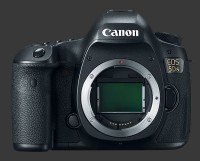
Canon EOS 5DS DSLR with many features of the newer but lower-resolution Canon EOS 5D Mark IV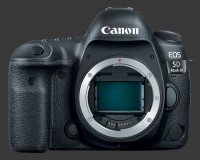
Canon EOS 5D Mark IV plus a huge leap in technology. As such, the flagship Canon EOS R5 is equipped with every feature needed by professional photographers. It is completely suitable - when paired with the appropriate lens as discussed in sidebar - for any type of photography, including fast action due to its electronic-shutter that reaches 20 FPS at full-resolution with a deep buffer.
One finds a full complement of exposure modes with a choice of metering patterns, including Spot Metering, plus exposure bracketing. Image parameters are quite customizable and there are numerous white-balance options, including Kelvin and Custom WB, all fine-tunable in 19-steps along 2-axis. Naturally, the R5 can save JPEG images and RAW files. Additionally, it can output images in 10-bit HEIF format whose support was introduced in the Canon EOS 1D X Mark III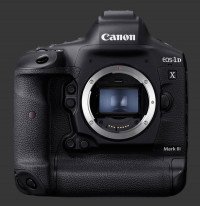
Canon EOS 1D X Mark III. HEIF images offer a wide exposure-latitude while benefiting from size-reduction due to its lossy-compression. Canon also offers lossy compressed CRAW format and the double-size Dual-Pixel RAW format that saved phase-data at every pixel.
Image processing is refined with a wealth of tuning parameters unseen in any previous Canon camera. Base Sharpness is controlled by the usual 8-point scale yet can be adjusted with Fineness and Threshold parameters in 5 levels each. The former controls how fine to sharpen edges, while the latter the point when sharpness gets applied. Independently of Picture Styles, the Canon EOS R5 introduces Clarity which has been widely adopted by other camera manufacturers. This parameter controls the tone-curve to make images look more dynamic.
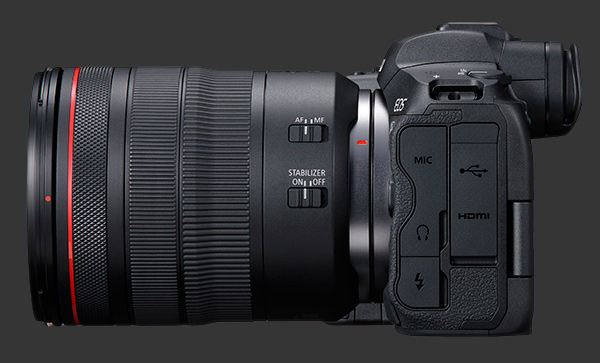
The autofocus system in the Canon R5 is the most capable yet. Building upon the Dual Pixel CMOS design that measures the phase of light at every pixel, this flagship mirrorless creates a virtual autofocus system with 5940 points and 1053 zones that cover the entire frame. Its sensitivity of -6 EV can focus in near-darkness, a level that is invisible to the naked eye but can be seen amplified in the EVF, an experience that is simply impossible with any DSLR. This mirrorless offers plenty of autofocus selection modes and sophisticated subject tracking that can prioritize human or animal faces. Canon includes the ability to bracket up to 999 images for focus with 10 step sizes and the option to smooth differences in exposure. Autofocus Bracketing is extremely practical since it is impossible to reliably reproduce by hand.
With the more efficient image-stabilization system ever built, the R5 is one of the most capable digital cameras for hand-held low-light photography. It is only exceeded by the Canon EOS R6
Canon EOS R6 that launched simultaneously, a camera that features the same 5-axis builtin stabilization mechanism yet with larger pixels that give it a full-stop extra sensitivity and make its AF capable of focusing down to -6.5 EV. This new mechanism is rated at 8-stops of efficiency which it reaches with stabilized lenses and even some unstabilized ones. Depending on the lens, the quoted efficiency varies between 6 and 8-stops.
Although not a 1-series camera like the 1D X Mark III, the R5 is nearly as capable for fast action photography. In fact, both these cameras have the same top-speed of 20 FPS when using the electronic-shutter. The difference is that the Canon EOS 1D X Mark III
Canon EOS 1D X Mark III tops at 16 FPS with its mechanical-shutter, compared to 12 FPS for the R5. Most impressively, the R5 reaches such speed with over twice the resolution! The buffer-depth of the R5 is not as deep but is still outstanding, up to 170 JPEG or 83 RAW at 20 FPS and up to 350 JPEG or 180 RAW at 12 FPS.
Second to the inclusion of a built-in image stabilization system, shared with the mid-range R6, is the unique capability among photographic cameras to record 8K video. It can do so at 30 FPS, even in 12-bit RAW internally or 10-bit MPEG-4, officially for up to 20 minutes at an ambient temperature around 23C. The R5 can also record 4K Ultra-HD video for 15 mins at 120 FPS and 35 mins at 60 FPS. Standard 4K at 30 FPS can be recorded without limit. Canon elected to passively cool the R5 to keep a compact-size and tight weather-sealing which limits recording times due to heat dissipation.
NOTE Once the camera overheats though, it only recovers for a short capture duration which is why there are significant reports of over-heating issues. Even after 10 mins of recovery following 8K video capture, it can only record up to 3 mins, so repeated testing results in frequent overheating. Exact times depends on the selected recording bit-rate, weather and air circulation around the camera.
This digital camera offers plenty of advanced features. Having 45 MP of resolution makes it possible to capture 8K Time-Lapse and the R5 can assemble the video in-camera without overheating because the throughput needed for time-lapse is much lower than standard video. Time-Lapse Video can comprise between 2 and 3600 frames with an interval from 2s to almost 100 hours. An option selects if the camera meters once for the entire time-lapse or for each frame. There is also a similar Interval-Timer that offers an interval from 1s to almost 100 hours. A fixed number of frames can be selected, up to 99 images, or the Interval Timer can continue indefinitely until stopped by the user, card-space runs out or the battery is exhausted, whichever occurs first.

Efficiency is a significant factor in making a camera for professionals. Photographers will be happy to hear that the EOS R5 is the most efficient camera Canon ever made. Its triple control-dials give direct access to every exposure parameter. An 8-way joystick directly controls focus selection. There is even a top status LCD that shows camera settings. Much of the Canon interface from their upper-range DSLR has been carried over yet with a number of improvements. The main unusual control is a Mode Button rather than a traditional dial.
This mirrorless camera is weatherproof against adverse weather. It features dual asymmetric memory-card slots, one SDXC UHS-II and one CFExpress Type B. The former allows existing memory cards to be used on the R5 to protect investment. Even SDXC UHS-II is slower then CFExpress which is why it is impossible to record 8K or 4K at 120 FPS video with one. At the limit, it can record 4K at 60 FPS with standard IPB encoding, while larger All-Intra files require CFExpress. Although CFExpress Type B cards share a physical form with XQD, the R5 does not support XQD memory cards. While the reason for using asymmetric memory-cards is valid, using them is less than ideal and requires more planning.
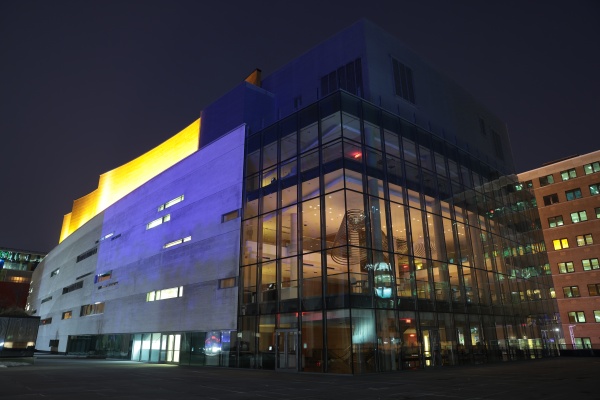
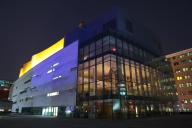
Normal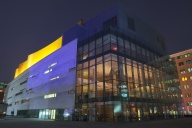
HDR ±2 EV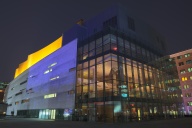
HDR ±3 EV
The list of features of the R5 goes on. There are a huge number of connectivity options, including Bluetooth 5.0, WiFi 802.11ac, an Infrared Receiver, 4K 10-bit HDMI output, a standard Hot-Shoe plus a Sync-Port. This digital camera has a builtin FTP client to initiate image-transfer directly. GPS data may be added to images using a connected receiver or smartphone. USB-C PD allows in-camera battery-charging. A proprietary wired connector supports Canon DSLR accessories. Voice memos can be attached to images. This is useful for anyone but particularly appreciated by professionals that need to keep track of photos and circumstances around them.
 |
Please Support Neocamera
All information on Neocamera is provided free of charge yet running this website is a huge endeavor. Purchases made via affiliate links found throughout the site help keep it running and up-to-date. There is no additional cost to you, so please consider buying via these links to our affilates:
Thank you for your support!
Canon R5 Highlights

Sensor-Size: 36 x 24mm

Actual size when viewed at 100 DPI
| 45 Megapixels Mirrorless | ISO 50-102400 |
| Canon RF Mount 1X FLM | Shutter 1/8000-30s |
| 5-Axis Built-in Stabilization, 8-Stop Improvement | Full manual controls, including Manual Focus |
| 0.50" Built-in EVF 5.8 Megapixels (0.76X) | Custom white-balance with 2 axis fine-tuning |
| Automatic Eye-Start sensor | Spot-Metering |
| 2 Axis Digital Level | Hot-Shoe |
| Weatherproof | Stereo audio input |
| Built-in Dust Reduction | Lithium-Ion Battery |
| 20 FPS Drive, 170 Images | CF Express Type B, Secure Digital Extended Capacity |
| 8192x4320 @ 30 FPS Video Recording | |
| 3.2" LCD 2.1 Megapixels |
Canon RF-Mount Lenses
Within two years of launching the Full-Frame RF-mount, Canon already offers 15 native lenses. The current RF lens lineup covers focal-lengths from 15 to 800mm with rectilinear lenses. This is nearly the same coverage as the entire lineup of Full-Frame EF-mount lenses for SLRs!
Focal-length is not everything though and there are far more EF lenses than RF ones. Canon demonstrated the potential of the RF-mount by releasing an ultra-bright F/1.2 lens and the only F/2 constant-aperture zoom lens with Full-Frame coverage. Subsequently, lenses with all maximum apertures from F/1.2 to F/11 were added.
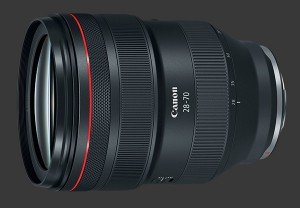
Canon currently offers no less than 5 general purpose zoom lenses, with a mix of focal-range and maximum aperture for all preferences.
- The brightest Canon RF 28-70mm F/2L USM

Canon RF 28-70mm F/2L USM offers a slightly narrower field-of-view than others while allowing at least 1-stop more light through. - There is a classic bright Canon RF 24-70mm F/2.8L IS USM
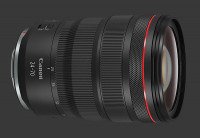
Canon RF 24-70mm F/2.8L IS USM workhorse lens which features builtin image-stabilization for older RF-mount cameras. - Trading one stop of brightness for more reach is the Canon RF 24-105mm F/4L IS USM
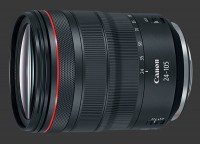
Canon RF 24-105mm F/4L IS USM constant-aperture zoom, one of the best all-purpose lenses on the market. - A highly compact Canon RF 24-105mm F/4-7.1 IS STM

Canon RF 24-105mm F/4-7.1 IS STM weighs about half the second lightest lens here. This lens provides the same focal-range and maximum aperture at wide-angle as the previous on but becomes extremely dim when zoomed in. - One of the few ultra-zooms for Full-Frame mirrorless digital cameras is the Canon RF 24-240mm F/4-6.3 IS USM
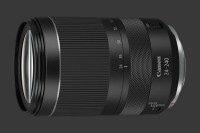
Canon RF 24-240mm F/4-6.3 IS USM. It packs 10X optical zoom with a rather dim maximum aperture to manage its 750g weight.
Only a single ultra-wide zoom exists for the Canon RF-mount. The Canon RF 15-35mm F/2.8L IS USM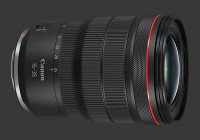
Canon RF 15-35mm F/2.8L IS USM is an outstanding lens for architecture and interior photography thanks to its 110° angle-of-view and bright F/2.8 maximum aperture. Third-party manufacturers offer a handful of ultra-wide prime lenses.
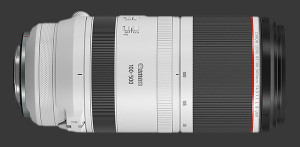
Two complementary telephoto zoom lenses made it into the RF-mount lineup. One is the Canon RF 70-200mm F/2.8L IS USM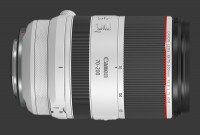
Canon RF 70-200mm F/2.8L IS USM which is universally sought after for street and wedding photography, plus sports quite often. The other is an extremely long Canon RF 100-500mm F/4.5-7.1L IS USM
Canon RF 100-500mm F/4.5-7.1L IS USM zoom with dim variable-aperture. This telephoto lens provides a reasonable compromise between size and reach, particularly when paired with an R5 or R6 which augment its stabilization efficiency from 5 to 8 stops.
The rest of the lineup can be split into bright prime lenses with apertures of F/1.2 to F/2 and a pair of extreme telephoto lenses with fixed F/11 apertures. Bright primes all have focal-lengths between 35 and 85mm. These lenses can be used for low-light and portrait photography. Two even have semi-macro capability with a 0.5X magnification. The fixed-aperture lenses are suitable for very distant and still subjects.
Even though these native lenses offer an impressive amount of versatility, Canon knows that many needs are left out. To account for this, three different EF-to-RF mount adapters were released. These adapters allow full-functionality, including autofocus, metering and stabilization from EF lenses. They even add unique features such as an additional control-ring and slide-in rear polarizer. This takes one of the most comprehensive lens lineups in the industry and makes it more capable! With the R5 or R6 and one of these adapters, it is possible to shoot a polarized image at low shutter-speed hand-held with any excellent Tilt-Shift lens from canon. Imagine the possibilities!
Updates
2025.11.13

Best Gifts for Photographers in 2025 by Budget
The annual Neocamera Photography Gift Guide updated to 2025. Find great gifts for photographers with any price budget.
2025.07.07

Stellar Photo Recovery Review
Review of Stellar Photo Recovery V12. This Windows and MacOS software can recover photos and videos in a huge number of formats from memory cards, USB drives, SSDs and HHDs.
2025.05.14

Huion Kamvas 13 Gen 3 Review
In-Depth review of the Huion Kamvas 13 Gen 3 Pen Display Tablet for photographers and graphic artists.
2025.01.18

Fujifilm GFX 2025 Lens Roundup
Lens Review roundup of Fujifilm GFX Medium-Format lenses. Quality, performance and handling of the GF20-35mm F/4R WR, GF30mm F/3.5 Tilt-Shift and the GF55mm F/1.7.
2024.11.18

Best 2024 Photography Gifts for Every Budget
Great gifts for photographers and photo enthusiasts selected for every budget among the best products of 2024.
2024.08.07

Eye Protection Tips for Professional Photographers
The four main considerations for professional photographers regarding eyewear.
2024.07.14

Fujifilm X100VI Review
Flagship fixed-lens compact digital camera with a 40 MP sensor and Image-Stabilization, a first for the series. Retro design featuring dual control-dials, plus direct ISO, Shutter-Speed and EC dials. Its hybrid viewfinder can switch between EVF and OVF mode.
2024.05.09

Fujifilm GFX100 II Review
Flagship 102 Megapixels Medium-Format Mirrorless Digital Camera with 8-Stop 5-Axis IBIS, 8 FPS Drive, 8K Video and 400 MP Super-Resolution capture in a weatherproof and freezeproof body with dual control-dials and dual memory-card slots.
2024.04.03

Fujifilm X-T5 Review
Newest Fujifilm flagship boasting a 40 MP APS-C sensor, 5-axis IBIS with 7-stop efficiency, 15 FPS continuous drive, 6.2K Video capture, dual control-dials and dual SDXC UHS-II slots in a sturdy weatherproof and freezeproof body.
2023.11.20

Best Digital Cameras of 2023
Find out which are the Best Digital Cameras of 2023. All the new Mirrorless Digital Cameras from entry-level to high-end professional.
2023.07.10

Fujifilm X-H2 Review
40 Megapixels APS-C Hybrid Mirrorless Digital Camera with 7-stop IBIS. Fastest shutter ever and 8K video capture. Large builtin EVF with 0.8X magnification and 5.8 MP, plus an Eye-Start Sensor. Packed with features and large number of controls in a weatherproof and freezeproof body.
2023.05.07

Sony FE 20-70mm F/4G Review
Review of the unique Sony FE 20-70mm F/4G lens. The optical zoom of this lens spans ultra-wide-angle and medium focal-length coverage, making it one of the most versatile Full-Frame lenses on the market.











